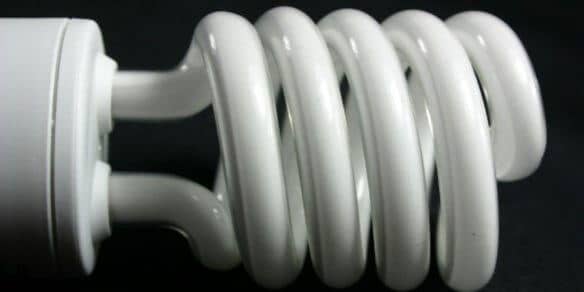We are constantly being reminded to use energy efficient light bulbs, yet millions of UK homes still use the standard bulb that we are all familiar with. The EU have started to phase out this traditional light bulb and are encouraging us to invest in more energy efficient options. However, with rumours of high cost, mercury leakage and migraine inducing bulbs, what should you buy, and is an energy efficient bulb the right bulb for you?
Halogen Bulbs
These bulbs are not too dissimilar to the standard bulb we are all familiar with. While they are still relatively cheap to buy, they are not cheap to run. Although the bulbs last twice as long as a standard bulb, they emit a serious amount of heat.
Compact Fluorescent Lamps (CFLs)
CFL bulbs are a much cheaper, and efficient, option. The cost of these bulbs start at around £2 and will last you up to five years - that's between 6,000 and 15,000 hours of light!
If you've bought a CFL bulb in the past you may have found that some omit a more yellow light than others. This is due to the 'colour temperature' of the bulb. Each bulb should have a reference to Kelvins (K) on the packaging. The higher the temperature (K) the whiter the light.
CFL bulbs contain a small amount of mercury, about 5 milligrams. Research has shown that a tiny fraction is released when bulbs break. For the mercury to reach hazardous levels it would need to be left exposed for several weeks. However, it is still recommended that you dispose of broken CFL bulbs in the right way (see the bottom of this article for advice on how to dispose of a CFL bulb).
CFLs are also deemed an enemy by some migraine sufferers. Fluorescent lights have what's known as a flicker rate, and although there have been rare cases, these flickers can trigger painful migraines. If you suffer from severe migraines it is advised that you invest in some LED lights.
Do not buy a CFL bulb if you have a light with a dimmer switch as they won't work!
Light-emitting diodes (LEDs)
The most energy efficient bulb is the LED, which uses 10% less energy than a CFL. LEDs contain no mercury, they reach their maximum light strength immediately, are migraine friendly and work with dimmer switches. One bulb will set you back around £15, however, it can last over 30 years. It seems the only downside is that LEDs are not as bright as other bulbs.
How to clean up and dispose of a broken CFL bulb
- Before you start removing the broken bulb, ensure all people and pets have left the room.
- Open all windows and air the room for up to half an hour.
- Do not vacuum the mess as you can spread mercury powder (and also damage your machine with broken glass).
- Scoop up all glass using card and sticky tape to pick up any remaining small pieces of glass.
- Place all pieces in a glass jar or in a plastic bag, including the tape you used to pick up glass.
- Dispose of all items used to clean up the mess (such as cardboard and cloths).
- Check with your local council if you can throw the bulb away with your normal rubbish collection. If so, double bag the bulb before throwing it away
Images by Chris Cummings

